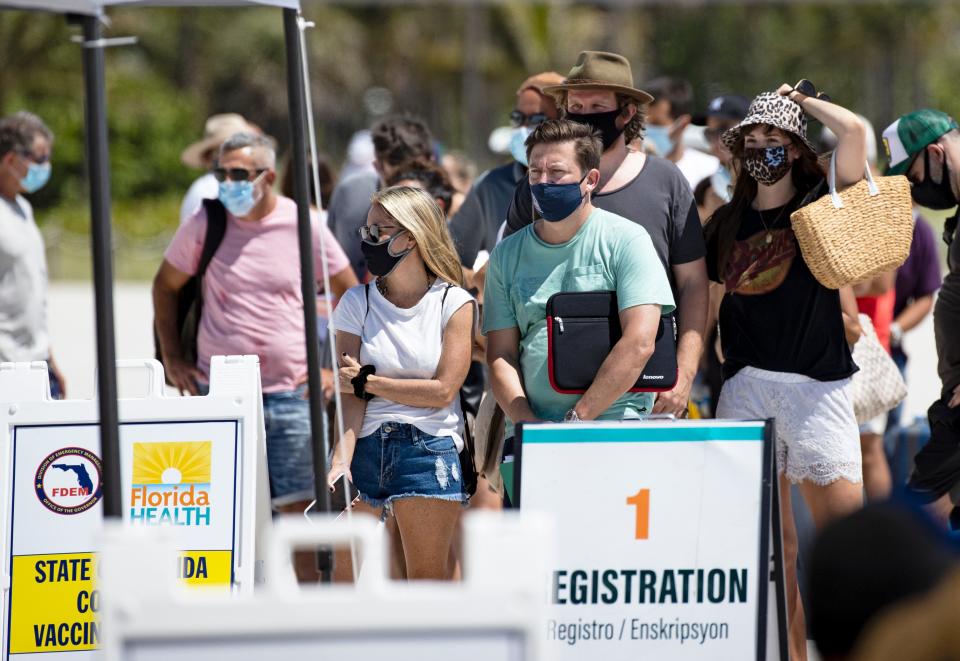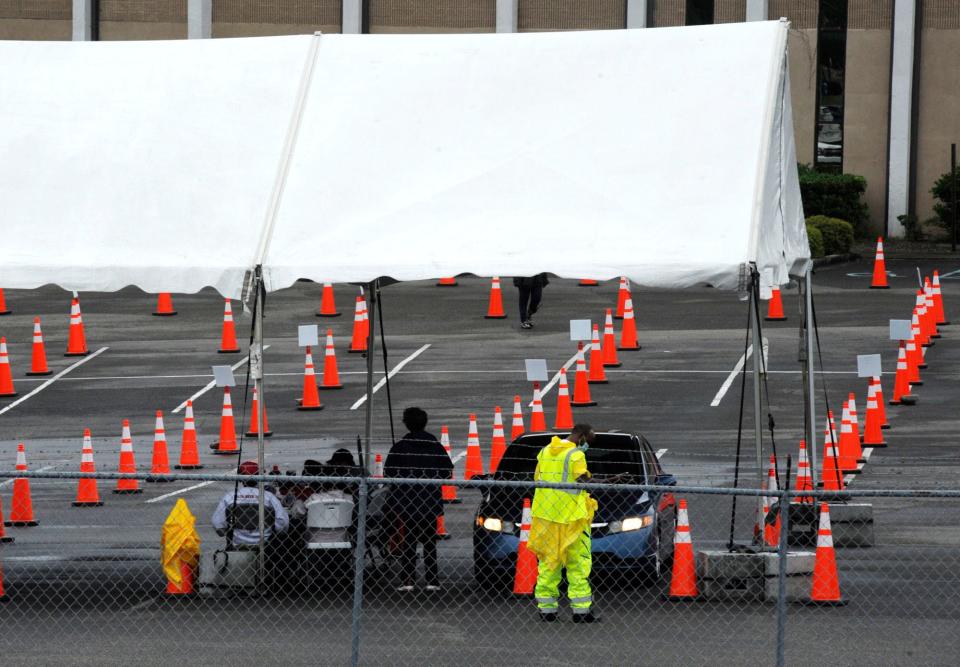As US nears vaccine tipping point, dramatic decrease in COVID-19 cases could come without herd immunity, some experts say
SAN FRANCISCO – It may not take true "herd immunity" to see a dramatic drop in COVID-19 cases. Some researchers say another 30 million to 40 million first shots could be enough for the United States to reach a vaccine tipping point and containment of the disease caused by the coronavirus.
"It's just another 10% to 15% more people," said Dr. Eric Topol, a professor of molecular medicine at the Scripps Research Institute in La Jolla, California.
Forty-four percent of the U.S. population has received at least one shot and 31% is fully vaccinated, according to the Centers for Disease Control and Prevention. A tipping point comes when enough people are vaccinated that COVID-19 cases begin to fall dramatically and the spread of the virus is contained – not stopped, but slowed enough to prevent large outbreaks.
"When you’re at 50% or so, you have a significant amount of downward pressure on cases. Half the people who are being potentially exposed to the virus no longer can get it. That’s a very big deal," said Dr. Robert Wachter, professor and chair of the Department of Medicine at the University of California, San Francisco.
Topol pointed to California, which has vaccinated 50% of its residents, as the poster child for what levels of vaccination only a little higher can mean. The state's seven-day average case rate is just 4.3 cases per 100,000 people. That's down from 5.5 per 100,000 a month ago and 9.6 cases per 100,000 for the last week in February.
“We’re seeing the first hint of this here," he said. "It's the largest state (by population), and it’s never looked this good since basically Day One of the pandemic.”
In San Francisco, where 72% of people ages 16 and over have received at least one dose of vaccine, only six people died of COVID-19 in the entire month of April. That's in a county of 882,000.
"These numbers are dropping dramatically, down fivefold in terms of the death rate," said Dr. Grant Colfax, director of the San Francisco Department of Public Health.
He attributes the drop to the city's focus on public health measures to lower transmission and community-based vaccination campaigns.
"We've built an 'every door is the right door' approach to vaccination," Colfax said.
Reaching the tipping point
While cases are rising in some states, nationwide they're falling. Perhaps most important, they're dropping like a stone in highly vaccinated age groups. Among Americans ages 65 and older, who are most vulnerable to the disease, two-thirds are fully vaccinated.
They were 94% less likely to be hospitalized with COVID-19 than people of the same age who were not vaccinated, a CDC report last week showed.
Those trends keep working their way down the population as more people get vaccinated, said Vermont Department of Financial Regulation Commissioner Michael Pieciak, the state's lead on state COVID-19 modeling and data. Vermont has the nation's third-highest vaccination rate at 56%.
"COVID case rates are down 60% over the month of April," Pieciak said, even among younger, less-vaccinated people.
While better weather allowing for more outdoor activities may be a factor, he says, vaccination played an important role.
"We basically got close to that 50% mark in the middle of April," Pieciak said. Even though that (younger) group isn't well covered yet, the rest of the Vermont population had good coverage, and that had an effect."

The United Kingdom reached its tipping point when about 50% its residents received their first dose, said Dr. Monica Gandhi, an infectious disease doctor at the University of California, San Francisco. Cases there have fallen 10%, and deaths were down 31% in the past week.
In Israel, which at 60% has one of the world’s highest vaccination levels, COVID-19 cases are down to less than 1 person in 100,000.
Gandhi is working with disease modelers who project that COVID-19 cases in the U.S. may fall to 10,000 a day on May 29 or even sooner. Currently, the nation is seeing 48,000 cases a day — the first time since October the daily number has dipped below 50,000 and 17% lower than the week before.
Getting another 30 million to 40 million Americans vaccinated will take community-based approaches, positive motivation messaging and lots of education, but Gandhi believes it's possible.
“I am almost positive we can get 60% of adults to agree to vaccination – at which point containment seems sealed,” she said.
Topol added: “It doesn’t really matter who gets vaccinated. We just need to find another 40 million people to do it.”
Not out of the woods
Not everyone, however, is convinced the number of vaccinations needed is quite that low.
Dr. Paul Offit, director of the Vaccine Education Center and an infectious disease specialist at Children's Hospital of Philadelphia, believes that to bring COVID-19 under control, closer to 80% of the population needs to have immunity.
Between vaccinations and natural immunity from previous infections, he puts the United States at about 50% population immunity right now.

He attributes the decrease in cases nationwide to a combination of vaccination, immunity through infection and a natural waning of the virus during the spring and summer.
"COVID-19 at its heart is a winter virus," Offit said.
If his numbers are right, the nation still needs a big chunk of the population to roll up its sleeves.
“You need to vaccinate another 100 million people before next winter hits,” he said.
Israel is seeing success with lower overall vaccination levels because Israelis behave differently, Offit said.
“They have vaccine passports, so you can go into a place where you know other people are vaccinated. They think like a society, but we think as a group of individuals,” he said.
Others point out that reaching a tipping point at which cases drops dramatically isn't the same as achieving herd immunity, which confers a population broad protection from disease. Herd immunity for COVID-19 is estimated to require 80% to 90% of people protected either through vaccination or previous infection.
SUBSCRIBE: Help support quality journalism like this.
"My hunch is that there are many places that will have lots vaccinated and there will be other places where for political or many other reasons will choose not be vaccinated. So while overall numbers will certainly drop, I worry about flare-ups," said Barry Bloom, an immunologist and global health expert at the Harvard T.H. Chan School of Public Health.
In Westchester County, New York, where 52% of people have had at least one dose of vaccine, COVID-19 case counts, hospitalizations and deaths are trending downward, said Dr. Dial Hewlett, medical director of the county's division of disease control.
He worries that as COVID-19 rates decrease, the unvaccinated will feel less pressure to sign up for a shot.
"It’s like when you have a big forest fire and you’re able to contain just about the entire fire but there are smoldering embers that can flare up," he said. "We don't want to let our guard down and become complacent."
This article originally appeared on USA TODAY: Vaccinations could contain COVID, lower US cases without herd immunity

